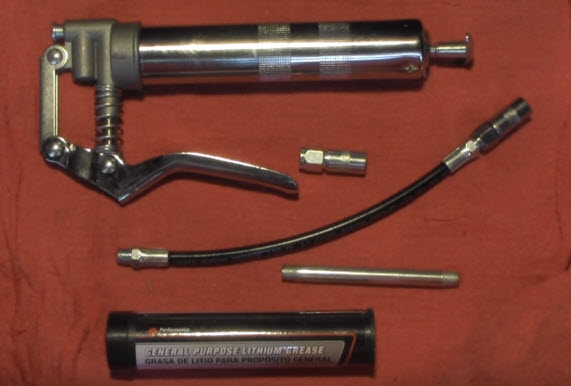Understanding How Grease Gun Parts Work

When there is a need to do any lubrication tasks, you know that you can rely on the use of a good grease gun. Before you will be using or getting your own grease gun, it is important that you first have a clear understanding towards how these tools work. Understanding the functions of a grease gun involves knowing its basic parts. Here you will learn more about how these grease guns function and what their basic grease gun parts are.
There are different kinds of grease gun models that you can see in the current market, and they are often divided into the manually operated ones and the battery-operated ones. Each type has their own parts that make them unique from the other and make their functions different from each other.
When it comes to manually operated grease guns, the lever is the one that must be hand pumped by the grease gun user so that grease goes out of the barrel into the hose or tube. You can expect the same thing to work for manual grease guns that come with triggers or handles. The barrel is the grease gun part that is the main body’s exoskeleton. This is where you can find the grease that you will be using for your grease gun to expel. The kind of grease that you use will often be stored in a grease tube or bulk storage. This grease compartment is also referred to as grease cartridge. A grease cartridge can be easily inserted into your grease gun and can be easily replaced once your grease runs out.
The connection point that will hold your flexible hose or fixed tube in place is what you call the hydraulic coupler or connector that is often found attached to the head part of your grease gun. The head of your grease gun is where you case the grease pathways and valves of your machine. They are capable of pumping grease from your barrel going to your flexible hose or fixed tube. In your filler pump, there you will see the filler nipple that is where your grease lubricant will go out. Using an air-release type of nipple gives you some assurance that air will be properly expelled before you will be adding new grease supply into your grease gun.
Here is a close look at some of the grease gun parts and accessories that you are sometimes provided with or you can buy separately.
• Couplers, connectors, and adapters
Hydraulic couplers are what most grease guns come with. You can, however, choose to buy another one depending on your lubrication uses. 90-Degree adapters are your best bet for lubricating fittings located in confined spaces. On the other hand, for fittings found in tight spaces requiring precise and thin amounts of grease, a needle-end adapter is what you need.
• Flexible hoses and fixed tubes
The type of grease fitting on your grease gun determines which of these two you are getting for your grease gun. Furthermore, the kind of grease gun you have and the level of difficulty in applying grease will matter in choosing between these two options. A flexible hose is best used for lubricating fittings found in hard to reach areas. On the other hand, a fixed tube is best used when you want both of your hands to be free while pumping grease.
